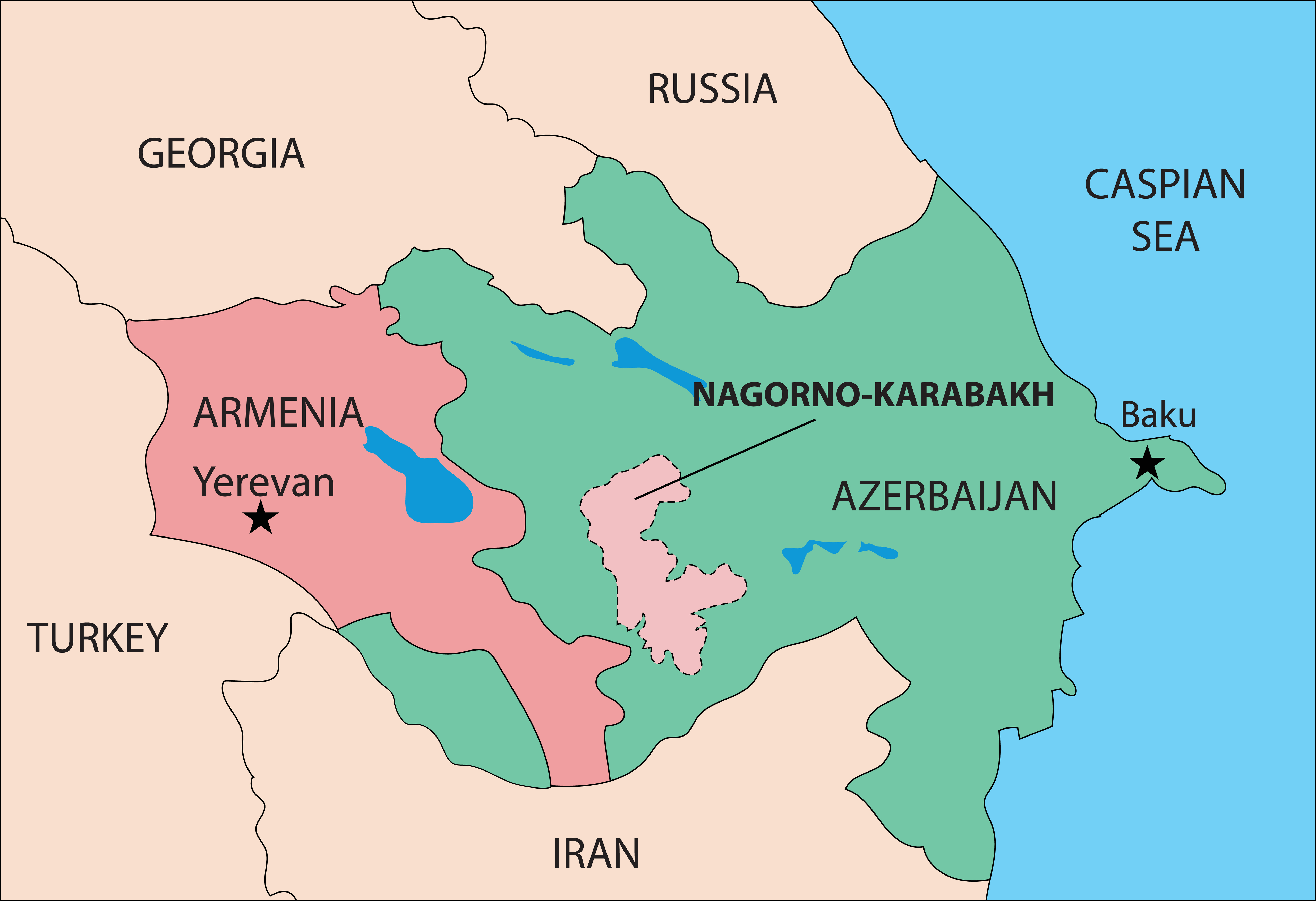
© rawf8/Shutterstock
Following the 20 September ceasefire agreement between Baku and the de facto authorities of the former Nagorno Karabakh Autonomous Oblast (NKAO), now Armenian Prime Minister Nikol Pashinyan and Azerbaijan President Ilham Aliyev are expected to meet for talks that will also involve France, Germany, and the European Council
Following the 20 September ceasefire agreement between Baku and the de facto authorities of the former Nagorno Karabakh Autonomous Oblast (NKAO), many eyes are now on Spain and the European Political Community (EPC) summit scheduled in Granada on 5 October. Armenian Prime Minister Nikol Pashinyan and Azerbaijan President Ilham Aliyev are expected to meet for talks that will also involve France, Germany, and the European Council.
After the last such meeting in Chişinău, Moldova, on 1 June, finding a solution is all the more urgent after last week’s fighting in the region that left hundreds dead and many more injured. Some 8,000 civilians are also believed to have been displaced, and the de facto authorities gave them the opportunity to leave Karabakh for Armenia first.
At time of writing, some 42,500 residents had been evacuated. The de facto authorities in Karabakh had consistently urged the population not to leave immediately unless they had been displaced and lacked shelter, but many did not heed the instruction, leading to scenes of chaos in the city and on the main highway to Armenia that Azerbaijan had permitted access to for the evacuation.
Warnings about the dangers of a mass exodus came true on 25 September, when 100-tons of fuel, made available without cost to those wishing to leave Karabakh amid fears of life under Azerbaijani rule, exploded outside of Stepanakert. Also at time of writing, at least 68 people died in the explosion and hundreds were injured. Though Azerbaijan also offered medical assistance, an agreement was reached to also allow the most critically injured to be airlifted to Armenia given the backlog on the Lachin highway caused by the unordered exodus.
Even the former Minister of Defence, the once powerful Samvel Babayan, surprised many by arriving in Yerevan earlier the same day, as he may have been arrested for his role in the Karabakh war of the 1990s. However, he claimed that he presented his papers at the Azerbaijani checkpoint on the Hakari bridge and was allowed to pass.
However Vitali Balasanyan, senior Karabakh military commander and Secretary of the region’s de facto Security Council until the beginning of this year, told Armenian media that he would not leave. “I was born in Karabakh, lived in Karabakh, and will live in Karabakh”, he said.
The exodus, however, has only pushed Yerevan and many Armenians to double down on claims that Azerbaijan seeks to ethnically cleanse the region, charges that Baku denies. Instead, Azerbaijan says it will integrate the region’s ethnic Armenians into wider society, but whether that is even possible remains unknown. Ethnic Armenians have not lived under Baku’s authority for three decades now. To date, two meetings between Azerbaijani and Karabakh representatives have taken place.
Though little more is known about the talks, it was announced that the delivery of humanitarian supplies would resume via both the Lachin and Aghdam roads and the electricity supply would be restored, something that happened on the evening of 25 September, though from the Azerbaijani and not Armenian grid. The gas supply is also expected to resume next, again from Azerbaijan proper.
The dissolution of what remains of the former Soviet-era NKAO is rumoured to be announced soon.
But, as the future remains uncertain, Yerevan and Baku have other issues to resolve. With Karabakh now gradually coming under Baku’s control, and the rights and security of the Karabakh Armenians now likely separated from the Armenia-Azerbaijan normalisation process, that leaves only the issues of border demarcation and the unblocking of regional transportation as potential obstacles to signing a long-awaited peace agreement to end the three decade-long conflict.
In part, failure to agree to reciprocal arrangements for Azerbaijan’s access to its exclave of Nakhchivan via Armenia and the Lachin Corridor led to the impasse on the latter since December last year, when Baku partially or fully restricted access to Karabakh. According to the 2020 trilateral ceasefire statement, the “Zangezur Corridor” would be overseen by the border guard service of the Russian Federal Security Service (FSB).
The European Union, just as the now defunct OSCE Minsk Group before it, also views the issue as an important part of any Armenia-Azerbaijan peace agreement. Likely, however, its concern about effective Russian control tallies with Yerevan’s, especially since the 2022 Russian invasion of Ukraine. But in lieu of a negotiated agreement on the modalities of operating such a route, Armenia has other fears too.
Speaking at the 78th United Nations General Assembly meeting on 23 September, Foreign Minister Ararat Mirzoyan warned that Yerevan believes that Baku’s frustration with delays could instead manifest as further military action this time aimed at Armenia and not Karabakh. Adding to such concerns, on 25 September, the Turkish President Recep Tayyip Erdoğan met with his Azerbaijani counterpart on an unexpected visit to Nakhchivan.
However, on 26 September, Erdoğan was quoted by media as saying that if not through Armenia then the “Zangezur Corridor” could pass through Iran.
Meanwhile in a welcome move, Armenian Security Council Secretary Armen Grigoryan and Azerbaijani presidential advisor Hikmet Hajiyev met in Brussels on 26 September. In view of the Granada meeting, they were joined by the advisors of French President Emmanuel Macron, German Chancellor Scholz, and European President Charles Michel. As the clock ticks down towards the end of 2023, the stakes are high and so is the uncertainty.



































 To Top
To Top